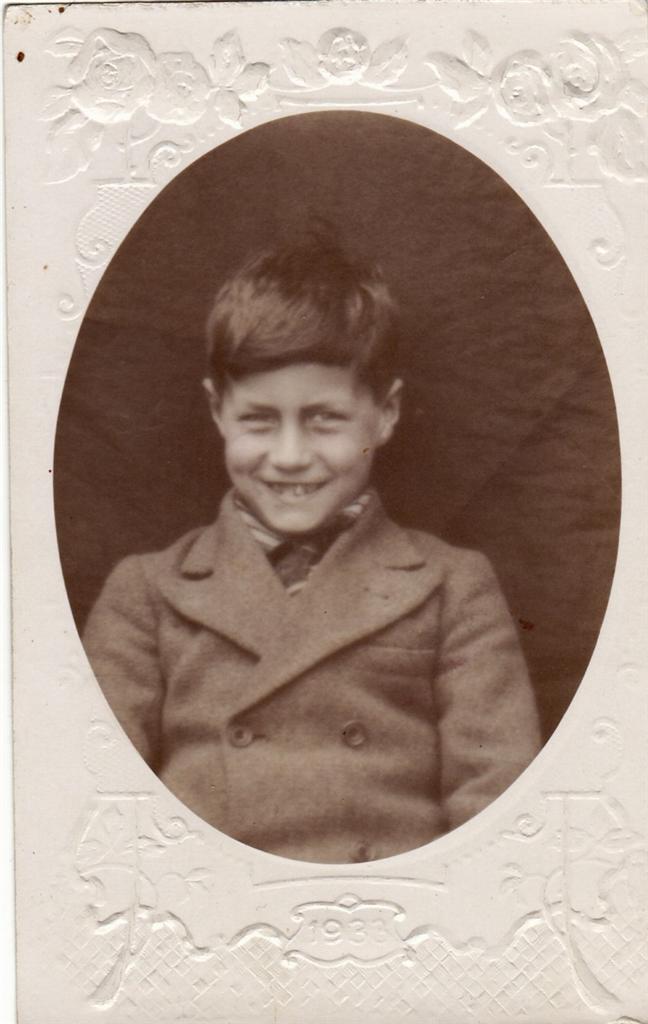
Figure 1.--This close-up oval format portrait of an English boy was taken in 1933. It looks to be a cabiner card, Notice the elaborate embossed floral design. The actual photo meaures about 10 cm by 8 cm at the maximum extent of the ioval. |

|
While there were many similarities with the cabinet cards made in England and other countries, there were also differences. We see mount style changing at the turn-of-the 20th century. Unlike the ckassic mounts which were gairly standardd, there was a great diversity and sizes in the new cabinet card mounts. This also occurred in America and at the same time. At this time we begin to see differences between English and American cabinet cards. Unlike the classic style, we see many different mount styles that we do not see in America. We notice differences in sizes and decoration. Some of the mounts for the new style English cabinet cards are highly decorative, more so than what we have noted in other countries. We do not yet have a good idea of the chronology of these different styled cards. They began to appear about the turn-of the 20th cerntury. Some may have been made in the very late-1890s, but most appeared beginning about 1900. As in America, we are not sure why the mounts suddenly began to change. There appear to have been some cabinet cards made into the 1930s. We note one oval format cabinet card with impressed floral designs made in 1933 (figure 1). This would be later than the dates we have seen in other countries. As some of the new styles do not have the studio information, identifying the countries of origin can be difficult.
We see a few of the new style mounts or some of the new style features in the late-1890s. For the most part, however, the turn-of-the 20th century is when we begin to see large numbers of these new mounts. The cabinet card was still a major photographic format in the 1900s. It had, however more competition with the explosive growth of the snapshot following the release of the Kodak Brownie. Many of the snapshots were done with postcard backs. Studios also offered postcard backs. The cabinet card was largely a studio format. We begin to see some cabinet cards that look like more like family snapshots than studio portraits. This is a little difficult to assess, in part because there were both street and itinerate photographers working outside stidios, although theu may be associated with studios. This seem to be more prounced in England than America because more Americans could afford cameras and familily snapshots. We see a range of different, colors, shapes, sizes, decorative, and framimg devices. Cabinet cards began a notable decline by the 1910s. We continue to see cabinet card into the 1930s, but the cards were no longer a dominant fornat by that time. The heavily embosed 1933 cabinet card isn a good examole (figure 1). We also see plainer cards with draming devices. White seems to gave bbe a popular color in the 30s.
We see English cards with extensive embossing. The 1933 mout here is a good example (figure 1). Here floral motiffs are being used in the emboaaing. The image still dominates the mount, taking up over half pf the surface area. The mount is a white card.
We see some mounts with elaborate framing. And here we so not just mean framing lines like we saw with early CDVs and cabinet cards. Rather we see differeht texture areas amd even an embossed frame that looks like a real frame. There were a vurtually infinite number of ways that these different framing apliques and approches could be organized on a card. Sone of these mounts seem to reduce the image to kess than half of the surface area of the card. The example we have is a brown mount. And the image itself might have a white border. Sizes varied. We note one 3 x 5 in card which was smaller than the classic cards. Some of thee mounts have so much framing that the image is less than half the surface area of the card.
Here we see a 1933 cabinet card with an oval formt. There may have been other geometric sgapes, but as far as we can tell, oval formatting was the most standard. We see a few classic caninbet crds also dine with oval formatting. Some of these caninet vard formatting were combined. The rd here for example was an oval format on an embossed card. .
Navigate the Boys' Historical Clothing Web Site:
[Return to the Main English cabinet card chronology page]
[Return to the Main English cabinet cards page]
[Return to the Main English negative-based albumen process page]
[Return to the Main English negative-based photography page]
[Return to the Main English photography page]
[Return to the Main English page]
[Return to the Main country photography page]
[Introduction]
[Activities]
[Biographies]
[Chronology]
[Clothing styles]
[Countries]
[Essays]
[Bibliographies]
[Contributions]
[FAQs]
[Glossary]
[Images]
[Links]
[Registration]
[Tools]
[Boys' Clothing Home]
